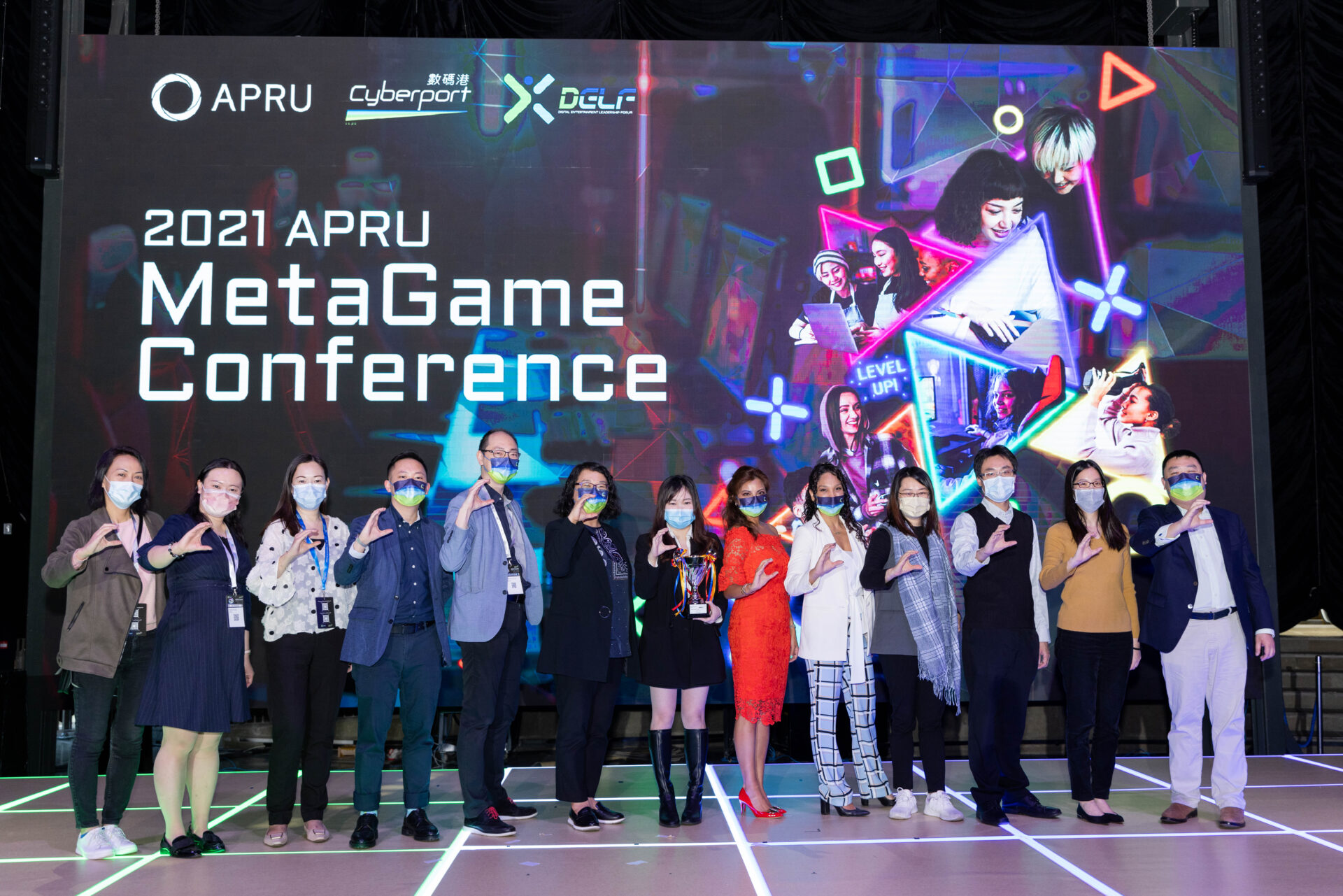Original post on HKMB
“All the world’s a stage, and all the men and women merely players,” wrote William Shakespeare in As You Like It. Substitute “screen” for stage and that quote remains as apt four centuries after the play’s first performance.
The interplay between performance and reality was on global display at the Digital Entertainment Leadership Forum (DELF) hosted by Cyberport in Hong Kong in December. Appropriately for the digital 21st century, the physical show was held in parallel in three centres, with simultaneous events in Hong Kong as well as Los Angeles in California and Vancouver, Canada.
Play to learn
Organised by APRU (the Association of Pacific Rim Universities), which brings together tertiary education institutions in technology hotspots such as California and Hong Kong, Metagame Conference 2021 emphasised how electronic games and e-sports are boosting education and playing a growing role in solving real-world issues such as emissions-reduction and conservation.
“We are all getting used to new ways of communicating in the metaverse,” Sherman Cheng, APRU CFO said, explaining the three-cities format. “We have virtual conferences, meetings and tournaments in the morning, afternoon and evening, with people around the world. In the APRU Senior International Leaders’ Week held in October, we worked with the University of Sydney to create a spatial chat space for networking at the end of each day.”
APRU has three members in Hong Kong – the Chinese University of Hong Kong (CUHK), University of Hong Kong (HKU) and Hong Kong University of Science and Technology (HKUST). “Hong Kong being an education centre was definitely one of the key factors for APRU in deciding on the location for our second MetaGame Conference,” Mr Cheng said. “Our first one last year was also in Hong Kong. But more importantly, as a strategic partner of Cyberport and having APRU’s International University Centre opened here in 2021, APRU wants to support and work with Cyberport to create greater impact.”
Games business
Mr Cheng explained that many universities have incorporated games into their learning – known as gamification – as well as offering courses in games production.
“USC Games at the University of Southern California – an APRU member – has one of North America’s top games undergraduate programmes and is paying homage to gaming trailblazer Gerald ‘Jerry’ Lawson by establishing an academic endowment in his name. Lawson was a Black engineer who led the design of one of the earliest game consoles.”
Giving an example of using games for the greater good, Mr Cheng pointed to the University of Washington (an APRU member in Seattle), which is participating in the Campus Conservation Nationals, a competition to conserve energy and water on campus. “The competition is part of a gamification trend – using game mechanics to engage people to achieve non-game goals. [The university] views it as education outside the classroom, a catalyst that will change how students think about their lifestyles.”
Giving an example from Asia, he referenced the Yong Loo Lin School of Medicine of the National University of Singapore (also an APRU member), which has created an innovation called HEALING, or Health Economics Awareness LearnING, a technology-enhanced simulation game that educates medical students on the importance of healthcare economics.
“The main pedagogy in this game utilises information and knowledge in healthcare spending, including the cost of investigations and treatments as well as methods of financing hospital bills, to train players on what constitutes optimal cost-efficient clinical care to patients,” Mr Cheng said. “Through this learning tool, learners are exposed to diverse clinical scenarios involving patients of various demographic profiles which require their decision-making on the ordering of investigations and management procedures.”
Turning to Hong Kong, he said: “HKU’s Department of Computer Science offers a course on Computer Game Design and Programming. This course introduces the concepts and techniques for computer game design and development. Topics include game history and genres, game design process, game engine, audio and visual design, 2D and 3D graphics, physics, optimisation, camera, network, artificial intelligence and user interface design. Students participate in group projects to gain hands-on experience in using common game engines in the market.”
Multitasking
Other examples include CUHK’s Computer Game Development and Video Game and Play Culture courses. Such courses in computer game development touch on many facets of computer science, including computer graphics, artificial intelligence, algorithms, networking, human-computer interaction, music and sound, allowing students to get a hands-on experience in designing and implementing real-world computer games. HKUST offers a similar computer game development course.
Mr Cheng said that the Playing for the Planet Alliance, facilitated by UNEP – the United Nations Environment Programme – is a good example of how business and industry can support conservation and wildlife protection through game design.
“The Playing for the Planet Alliance was launched during the Climate Summit at the UN Headquarters in New York. In total, the members of the alliance (including the biggest gaming companies) have the ability to reach more than 1 billion video game players. In joining the alliance, members have made commitments ranging from integrating green activations in games, reducing their emissions, and supporting the global environmental agenda through initiatives ranging from planting millions of trees to reducing plastic in their products.
“Our speaker at the APRU MetaGame Conference, Sam Barrett, Chief of Youth, Education and Advocacy Unit, Ecosystems Division, with UNEP, founded the Playing for the Planet Alliance as a collaboration with the video gaming industry to nudge gamers’ behaviour and push the industry to use cleaner energy.”

